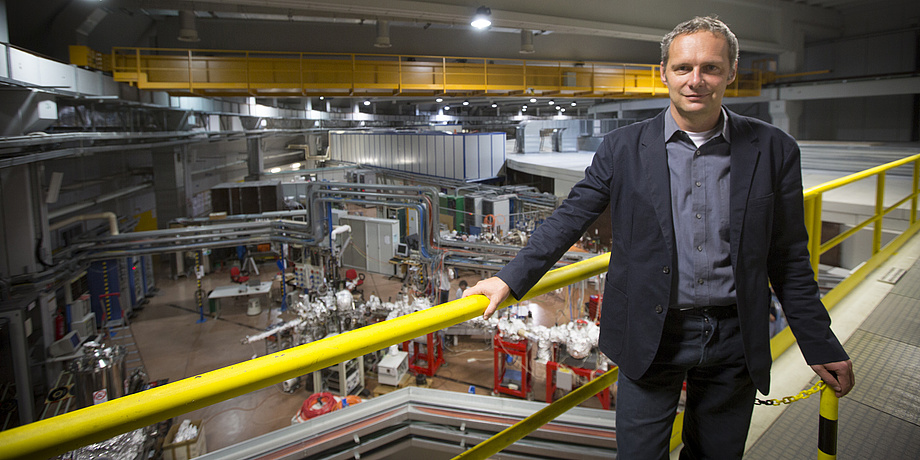The circular route around the storage ring at the centre of the Elettra Sincrotrone Trieste research facility high in the mountains above the Italian harbour city of Trieste is 280 metres long. Here you can take your daily stroll along the 28 currently operational beamlines just as though you were on an endless running track. The walk past office containers and workplaces lasts a good ten minutes. In contrast to the unhurried pace of humans, inside the storage ring electrons manage to go round the whole circuit incessantly 1.1 million times per second. So definitely faster than you would on foot, by scooter or even by bike.
The storage ring has a diameter of 80 metres and is the core of the research facility which was established in 1994 at Basovizza, a little town near Trieste, and which has since then been operated with several research facilities throughout Europe. TU Graz has been participating for more than 20 years in the success story of the research facility.
In the synchrotron – a ring-shaped particle accelerator – extremely bright light is produced with the help of which organic and inorganic materials are X-rayed and investigated. The light also serves to produce the material structures in nano-format in the first place. This research is essentially earmarked for many fields such as microelectronics, nanotechnology, medicine and environmental technology.
Switch to the Planet research article on News+Stories online to read more about the ‘Elettra Sincrotrone Trieste’ storage ring and about how the material structures and structural changes of organic and inorganic samples in liquid, solid or gaseous form are investigated in particular.
